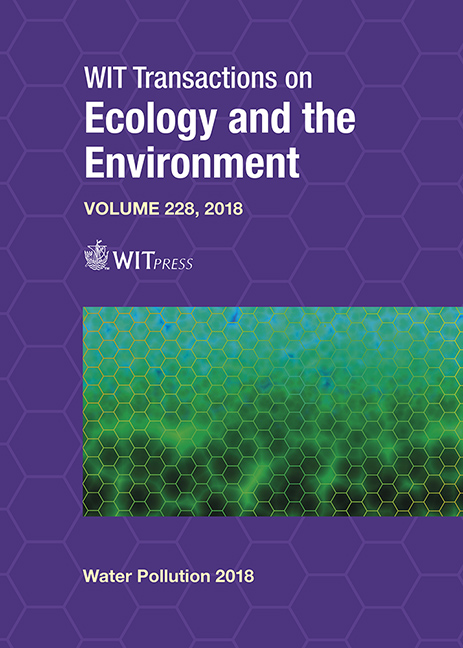LABORATORY EXPERIMENT ON GENERATION OF ANAEROBIC GAS AND SCUM FROM ORGANIC SLUDGE IN URBAN RIVERS
Price
Free (open access)
Transaction
Volume
228
Pages
12
Page Range
9 - 20
Published
2018
Size
681 kb
Paper DOI
10.2495/WP180021
Copyright
WIT Press
Author(s)
SHIN MIURA, TADAHARU ISHIKAWA, TETSUO HOTTA
Abstract
Although the area served by sewers in Tokyo’s wards has reached 100%, 80% of this is combined sewer systems that were built before 1980, and when there is a storm runoff, organic sludge is discharged into rivers. Scums with malodor often appear in the brackish water reach of urban rivers due to the buoyancy caused by anaerobic gas produced in organic sludge deposition. In this study, a series of laboratory experiments were carried out using organic sludge collected from combined sewer systems to investigate the generation of anaerobic gas and scum. Water temperature, salinity, sediment ignition loss, and amount of sedimentation were controlled, and the gas components were analysed. The range of experimental conditions was determined from field observations of the Nomi River, which flows through the southern part of the Tokyo ward area. Gas analyses indicated that two-thirds of the anaerobic gas is methane and that hydrogen sulphide increases under high-salinity conditions. Based on the measurements of the rate of gas generation, a practical empirical formula was prepared that includes the effect of control factors. Observations of scum generation in the experiments indicated that generation time is inversely proportional to gas generation rate, and the amount of sediment formed is proportional to the initial volume of sediment accumulation.
Keywords
urban river estuary, organic sludge, scum with malodor, anaerobic gas emission





